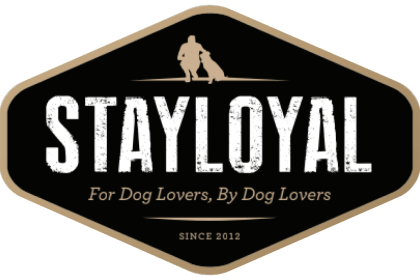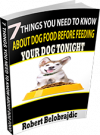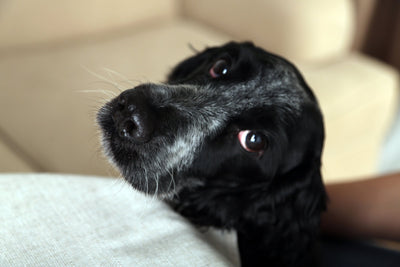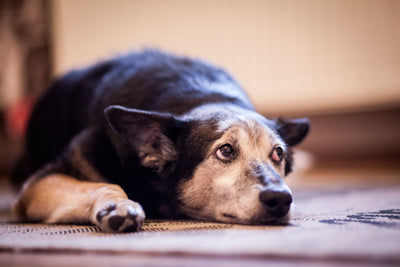6 Ways To Ensure Your Dog Doesn't Get Into Your Valentine's Day Sweets
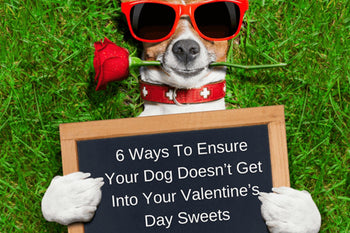
Valentine’s Day is the second biggest sweets holiday next to Easter. Traditionally chocolate, candies and other sweets, like chocolate-covered strawberries, are given to us by friends and loved ones. And while these treats are yummy for us, they can spell disaster for our dogs. And it’s not just chocolate. While chocolate can be deadly, dog owners should be aware that any sugary treat can cause serious problems.
Xylitol
One of the biggest toxic ingredients in sweets aside from chocolate is Xylitol. Used in many sugar-free candies (chocolate and non-chocolate) and chewing gum, Xylitol causes your dog’s blood sugar to drop and can cause liver failure. Symptoms of Xylitol poisoning include:
* Vomiting
* Lethargy
* Loss of coordination
* Seizures
It can be fatal. If your dog has eaten any amount, take them to the vet immediately.
Chocolate
Chocolate is well-known to cause problems in dogs. Because it is actually the cocoa and not the mixed-ingredients we call chocolate that causes the issue, the darker the chocolate the more problems it will cause. This is because it contains more cocoa. So 70% dark is much more dangerous than milk chocolate, even if your dog eats more of the latter. Veterinarians and experts seem to differ on exactly what is the toxic ingredient in cocoa. Some sources, including the American Society for the Prevention of Cruelty to Animals (ASPCA), say it is the methylxanthines (which are also found in coffee and caffeine). On the other hand, the Animal Health Foundation says it is theobromine. What vets do agree on is that ratio of amount eaten to the dog’s body weight and the percent of cocoa in the chocolate is what determines how toxic it is to your particular dog. So a Great Dane can eat more of the same percent cocoa as a miniature poodle and may not react as violently as the Poodle.
Regardless of what really is causing your dog to be sick, you should ensure they do not eat chocolate of any kind. Especially dark chocolate. Symptoms include:
* Vomiting
* Restlessness
* Thirst
* Diarrhea
* Seizures
* Heart Failure
5 – Healthier Joints
If your dog has eaten any amount of chocolate, take them to the vet immediately as a precaution.
Other Sugary Treats
Sugar is not good for dogs – just like it really isn’t that great for us. And since most of our dogs weigh much less than us, it doesn’t take as much of it to have adverse effects on their bodies. These effects are the same as they are in humans: dental problems, obesity and diabetes, to name a few.
Are Some Dogs More Prone To Issues?
As mentioned above, size does matter when it comes to toxicity levels. So, owners of small breed dogs should be extremely diligent about keeping foods containing these items out of reach. If you have a larger dog, however, they may be able to eat more and be okay, but it’s also easier for them to get into things that you may think are out of reach and safe.
In addition, there are other groups of dogs whose bodies will be more sensitive to ingesting any amount of toxic foods, regardless of size. These are:
* Senior Dogs
* Puppies
* Diabetic Dogs
* Obese Dogs
* Dogs with liver failure
* Dogs who have compromised immune systems due to illness
For these dogs, any amount ingested could mean serious trouble.
Avoiding Trouble
So the best way to avoid an emergency trip to the veterinary office when you are supposed to be having a romantic evening with your special someone is to ensure your dog cannot get into any chocolate or sweet treats you received for Valentine’s Day. Here are a few tips to help you have a lovely and safe holiday.
1. Put sugary treats in high cupboards or in the refrigerator.
2. Never leave out on tables or counters, even if you “think” your dog can’t reach. It’s amazing how resourceful they can be when they want something.
3. If the food must be out – say you are about to eat or you are having a party and want to leave food out for guests, then you need to plan ahead and do what’s best for your dog. This may mean putting them in a different room, or even a crate, with a treat of their own, like a digestible chew, so you don’t have to worry about them eating something they shouldn’t and you can focus on your evening.
4. Keeping them on leash with you so you can monitor them at all times. Again, never underestimate how sneaky a dog can be when they are trying to steal yummy-smelling chocolate or candy. Even a dog that never steals from your plate may not be able to resist the smell of a chocolate-covered strawberry or that box of sugar-free candy.
5. Take the garbage out immediately. Many toxic ingestions happen after the holiday. We throw away our left overs and the dog gets into the trash. So instead of leaving the kitchen garbage full, take it out to the big bins where your dog can’t get to it.
6. Some houses don’t have high enough cupboards or places to put food that dogs can’t get into. Some dogs know how to open the refrigerator! In these cases, baby locks will be your best friend. Locking the cabinets where the food is kept is a great safety precaution. If your garbage is stored under your kitchen sink, locking that cabinet is a good idea too.
Remember, being overly safe is better than having to live with regret later. A few safety precautions will mean everyone in your family can have a wonderful Valentine’s Day.
